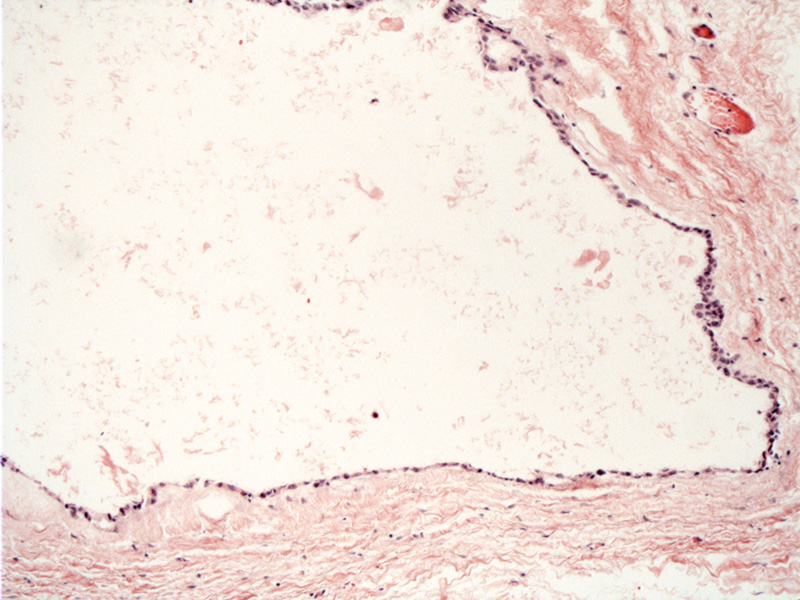

A flattened single layer of mesothelial cells lines the cyst. Such cysts may be multiple on occasion and be free floating in the abdominal cavity.
Peritoneal inclusion cysts can be unilocular or multilocular. Interestingly, these cysts are usually found in reproductive age women and are thought to be reactive in origin rather than neoplastic.
Unilocular (simple) inclusion cysts are usually incidental findings and exist as single or multiple thin-walled translucent cysts, either attached to a mesothelial-lined surface or free-floating within the peritoneal cavity. These simple cysts are usually no larger than a few centimeters in size at most.
Multilocular cysts, on the other hand, are symptomatic and causes quite a bit of morbidity. They can be large, some >20cm.
Multilocular peritoneal inclusion cysts are also called benign multicystic peritoneal mesothelioma, however, some authors do not like this term as they believe that this is a reactive, rather than neoplastic process. Patients usually provide a history of previous abdominal history, PID or endometriosis (Fletcher, Safioleas).
These cysts are lined with an attenuated mesothelial lining, and the contents of the cyst are yellow watery or gelatinous substance.
• Peritoneum : Benign multicystic peritoneal mesothelioma
Fletcher CDM, ed. Diagnostic Histopathology of Tumors. 3rd Ed. Philadelphia, PA: Elsevier; 2007: 882-3.
Safioleas MC, Constantinos K, Michael S, et al. Benign multicystic peritoneal mesothelioma: a case report and review of the literature. World J Gastroenterol. 2006 Sep 21;12(35):5739-42.